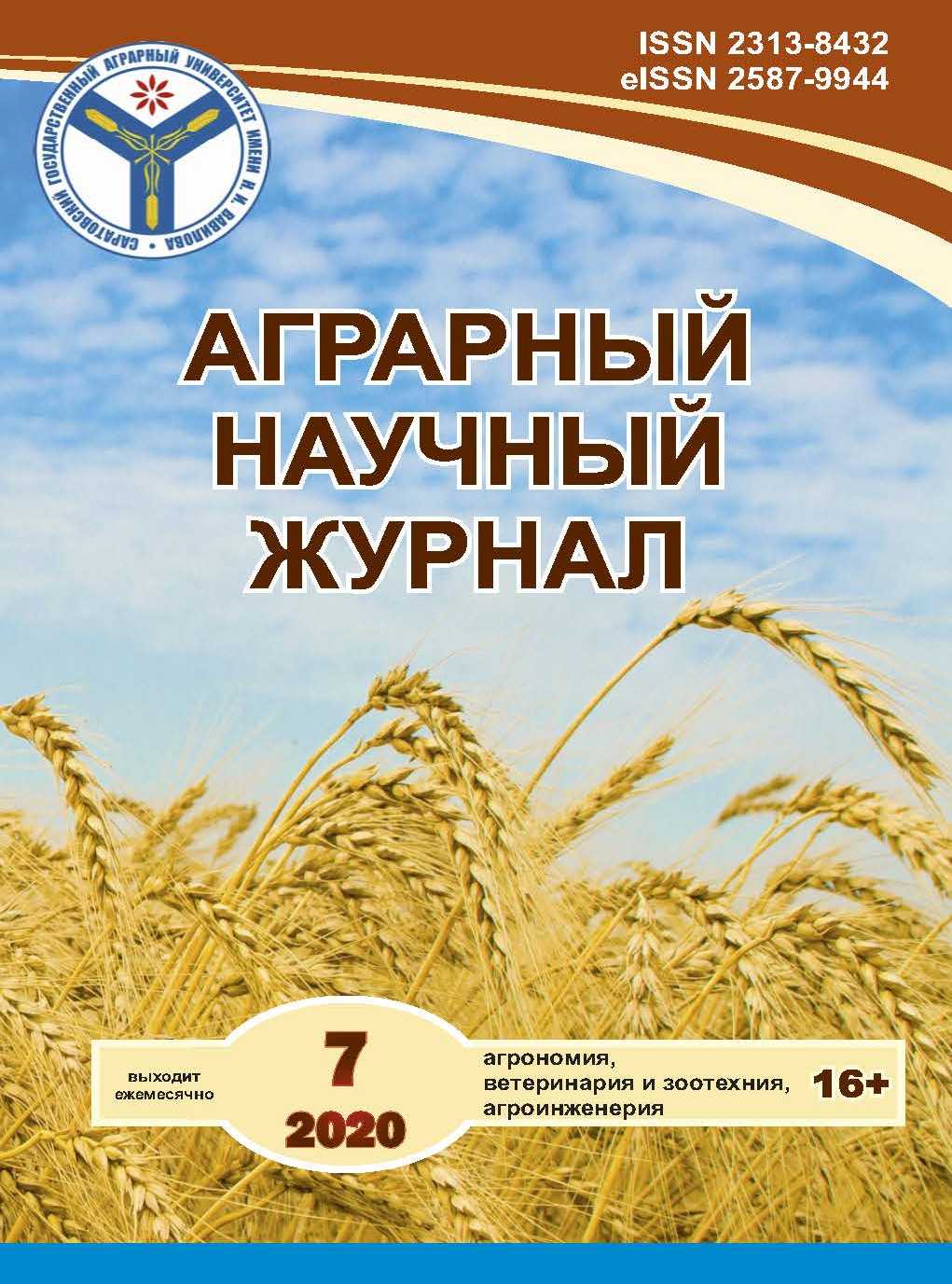Evaluation of varieties and lines of winter wheat for adpativity to the conditions of the Lower Volga region
DOI:
https://doi.org/10.28983/asj.y2020i7pp38-42Keywords:
winter soft wheat, selection, variety, line, productivity, adaptability, Lower Volga RegionAbstract
The results of studies of economically valuable traits of various varieties and new lines of winter wheat are presented. The studies were carried out on the experimental field of the Saratov State Agrarian University, located in the Lower Volga region with a sharply continental climate on dark chestnut soil. A study of the collection of varieties and lines of winter soft wheat made it possible to identify samples that are most suitable for economically valuable traits in the arid conditions of the Lower Volga Region and are highly adaptable. The largest grain yield was formed by the line SP-108 (4.54 t / ha) and such varieties as Levoberezhnaya 3 (4.28 t / ha), Stanichnaya (4.19 t / ha), Gubernya (4.11 t / ha), Agra (4.04 t / ha), and Novoershovskaya (4.03 t / ha). Most of these varieties and lines were created by scientists from local breeding centers (Research Institute of Agriculture for the South-East Region, the Ershov Experimental Station and the Saratov State Agrarian University). The high content of raw gluten in the grain was revealed in the varieties: Levoberezhnaya 3 (35.3%), Aelita (34.7%), Patriarch (34.6%), Dzhangal (34.3%), Lutescens 72 (34.3% ), Zernogradka 9 (34.2%), Yunona (33.8%), Yesaul (33.7%); lines SP-137 (33.7%) and SP-110 (34.9%). The best indicators of IDK were found in such varieties as Levoberezhnaya 3 (67.8 units), Dzhangal (69.4 units), Aelita (73.7 units), lines SP-137 (69.0 units) and SP-110 (71.2 units). The noted varieties and lines of winter wheat are recommended for further breeding in the direction of increasing drought tolerance, adaptability and productivity of the crop in the arid zone of the Lower Volga Region. The SP-108 line (SGAU 11/2019) allocated for high productivity potential was transferred to the state variety test under the name Elegya (Stepnaya 19).
Downloads
References
2. Бельтюков Л.П., Кувшинова Е.К., Бершанский Р.Г., Гордеева Ю.В. Технологии возделывания и продуктивность озимой пшеницы на черноземе обыкновенном Ростовской области // Проблемы и тенденции инновационного развития агропромышленного комплекса и аграрного образования России: материалы Междунар. науч.-практ. конф., 7–10 февраля 2012 г. – Пос. Персиановский, 2012. – С.114–119.
3. Ещенко В.Е.. Трифонова М.Ф., Копытко П.Г. Основы опытного дела в растениеводстве / под ред. В.Е. Ещенко и М.Ф. Трифоновой. – М.: КолосС, 2009. – 268 с.
4. Ионова Е.В. Засуха и засухоустойчивость зерновых колосовых // Зерновое хозяйство России. – 2011. – № 5 .– С. 1–5.
5. Ионова Е.В., Кравченко Н.С., Газе В.Л., Марченко Д.М. Устойчивость к абиотическим факторам среды и качественные показатели зерна сортов озимой мягкой пшеницы // Зерновое хозяйство России. – 2018. – № 4 (58). – С. 54–59.
6. Левицкая Н. Г., Шаталова О.В., Иванова Г.Ф. Оценка современных тенденций изменения климата и их последствий для сельскохозяйственного производства в Нижнем Поволжье. // Повышение эффективности использования агробиологического. потенциала юго-восточной зоны России. – Саратов, 2005. – С. 273–284.
7. Методика государственного сортоиспытания сельскохозяйственных культур. – М.: Колос, 1971. – 239 с.
8. Набойченко К.В., Молчанов В.Н., Малахова А.А. Результаты работы селекцентра ВолГАУ по созданию новых сортов озимой пшеницы // Аграрная наука – основа успешного развития АПК и сохранения экосистем: материалы Междунар. науч.-практ. конф.– Волгоград, 2012. – Т. 1. – С. 135–137.
9. Рыбась И.А., Гуреева А.В. Оценка сортов озимой мягкой пшеницы по урожайности и параметрам адаптивности //Зерновое хозяйство России.–2014.– № 1(31).– С. 18–22.
10. Сандухадзе Б.И. Селекция озимой пшеницы в Центральном регионе Нечерноземья России. – М.: ООО «НИПКЦ Восход А», 2011.–504 с.








